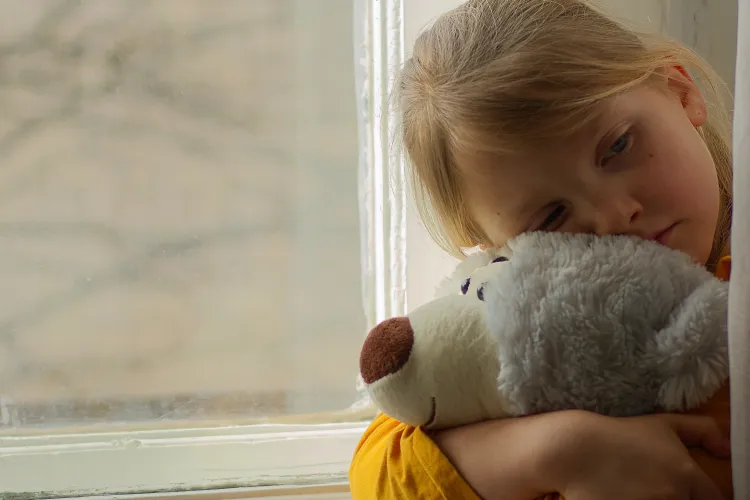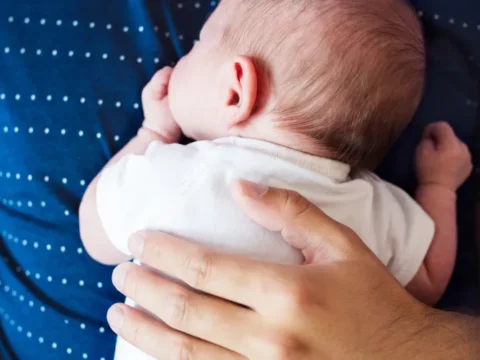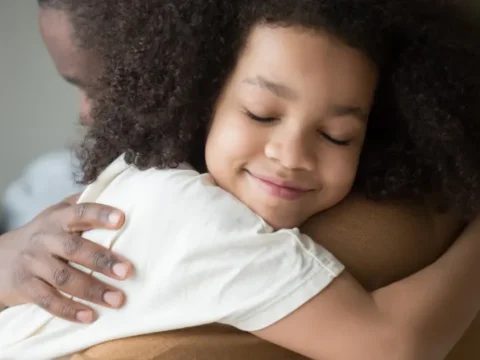There Is No Such Thing as a Fatherless Child.

By Kenneth Braswell, CEO, Fathers Incorporated
He’s there.
Even when a headline says he isn’t, even when a lyric spits him out like a curse word, even when a research brief reaches for the blunt edge of “fatherlessness” to make its point — he’s there.
I’ve said this for years in rooms big and small, in print and on-air: There is no such thing as a “fatherless” child.
One hundred percent of biological children have a father. The question is not if he exists — it’s where. Where is he in geography, in duty, in decision, in heartbreak? And when we stop asking “where,” we start teaching children to believe he doesn’t exist. That belief empties a space in a child’s chest and then punishes them for not knowing how to name the wind that whistles through it.
I know the word “fatherless.” I’ve used the word. It’s stamped on the spine of my own past work, echoed from stages, stitched into songs and poems, shouted across timelines and threaded through comment sections. Nothing I write today will erase it. (And — let’s be honest — there is mother absence, too. Pain doesn’t check “M” or “F” before it moves in.)
We have culturalized “fatherlessness” to mean abandonment by a man, full stop. We grab the worst case and make it the headline, then pretend the headline is the landscape. Meanwhile, life is messier and more ordinary than our slogans. Dads who travel half the year. Dads with three jobs. Dads across town or across the country. Dads who are estranged and don’t yet know the bridge back. Dads blending families and juggling obligations. Dads deployed. Dads incarcerated. Dads who left and dads who were pushed away — by systems, by shame, or by a thousand small dismissals that told them they didn’t matter.
Here’s the part we skip: A father can be absent and still present in the life and heart of his child. Presence and proximity are not the same thing. Absence has a thousand doorways; abandonment is only one of them.
I’ve watched another story grow, quieter than the noise and steadier than the headlines, but it’s precisely the medicine our language needs:
- Every blog, podcast, and kitchen-table livestream a dad starts is a counter-spell to the lie that he doesn’t exist. It restores his voice to the public square and gives his child a place to hear him speak.
- Every small organization cobbling together big love is a relay station where fathers trade isolation for community, because isolation is the accelerant of absence.
- Campaigns that trade caricature for complexity don’t just “raise awareness.” They deprogram a culture that has been taught to see men as myths or monsters.
- Job services and reentry bridges aren’t line-items. They’re the on-ramps back to dignity, to paychecks that fund school shoes and rent, to calendars that can finally match a child’s need for consistency.
- Domestic violence prevention matters because accountability is not anti-father; accountability is what makes a father safe to love.
- Mental health doors propped open for men, especially those told to shut every feeling, turn the temperature down on generational anger. Regulated men become reliable fathers.
- Skill-building, communication, and mindfulness are not buzzwords. They are the muscles that hold presence when life gets heavy.
- Church basements buzzing, school gyms filled on a Tuesday night, barbershop circles, town halls, conference ballrooms — these are civic heart valves pumping oxygen into the story of fatherhood.
None of it is quick. All of it is heart work. And if you can’t bring your heart to this table, don’t sit — because loose talk about “fatherlessness” without pathways to fatherfulness does real damage to real children.
“Fatherlessness” isn’t abstract for me. The word presses on my life in different ways, through each of my children, every day. My relationship with my oldest, whom I didn’t learn about until she was in her thirties, is cordial and respectful, but it carries the weight of years we can’t rewind. I’m still building a bridge strong enough to carry both of us across, plank by patient plank.
My next daughter felt the early absence that followed a separation and a move. We love each other deeply, and yet there’s a thin seam in our story that reminds us both of what distance can undo. I haven’t found the stitch that closes it clean.
My middle daughter is not my biological child, but I have been there since she was young. She is stilI my child, and I know my presence can cast a shadow that outlines another man’s absence. I have tried to stand in the gap, to be steady and gentle, but some hollows are shaped by questions only one voice can answer.
My youngest daughter and I are close. Her mother and I, even after our separation, chose intentionality like oxygen. We fought together for physical presence so she wouldn’t drown in emotional absence. She’s thriving, yet I still feel the quiet edges of what I miss by not sharing a home: the refrigerator-door stare in the morning and the after-school slump I can’t read because I’m not there to catch it in real time. These are the soft-spoken forms of absence — the unshared, mundane things that accumulate into meaning.
And then my youngest son, who has never woken in a home without both his mother and his father. He has had my physical, emotional, and spiritual presence in full. Still, calling and purpose don’t always consult the calendar. There are late flights, long meetings, trips where duty tugs me away from a game, a talk, a silence we were supposed to share. Even in the best of homes, life can carve small absences into the day. I feel them. He may feel them. And that is why I refuse to use “fatherless” like a stamp. It’s not a stamp; it’s a scar. And too often we press it onto children who are already healing.
And lastly, there is my nephew, who has been in my presence since he was days old and now, at eighteen, still carries the ache of his own father’s absence. In the space between nephew and uncle, I keep trying to translate my presence into something he can lean on as a man — a love that names him as my son in all the ways that matter, even as we both learn how to reconcile what’s missing with what we are faithfully building.
So when I fight for blogs, podcasts, and small nonprofits with big hearts, I’m not fighting for a trend. I’m fighting for the rooms where men are taught how to return, how to repair, and how to hold steady when shame says run. When I argue for job pipelines, reentry support, counseling, circles, and classes, I’m arguing for the practical tools that turn intention into presence. These are the antidotes to the cultural shortcut that reduces every story to one of abandonment. These are the ways we convert absence into arrival, confusion into clarity, wounded language into honest love. This is how we overwhelm the word “fatherless” with better evidence.
The task isn’t to win an argument about terminology; it’s to raise children who feel their fathers near — near enough to help with algebra and heartbreak, near enough to apologize and change, near enough to be counted on. The work is mighty. It is not hard work; it is heart work. And if we mean to combat the negative gravity of “fatherlessness,” then our investment — our policies, pulpits, programs, and personal calendars — must tilt toward one thing: increasing fatherfulness, in homes and hearts, one steady act at a time.
So let me name the shift I’m asking for. The problem is not a word; it’s what the word erases. If we must speak about the problem, let’s discuss father absence—with context, with care, and with the humility to acknowledge the many paths that lead there. Better yet, aim our language — and our budgets, politics, and practices — toward father presence. Toward fatherfulness. Say it out loud. Measure it. Fund it. Mentor it. Hire it. Heal it. Put it on the walls of schools and the dashboards of agencies: fatherfulness is a public good.
This is not an indictment; it’s an invitation. Use the word “fatherless” if you must, but do not fling it at a child like a verdict. Do not drop it into a room without a map. When you say it, explain it. When you hear it, ask where. Where is he — and what will it take to bring him closer, safer, wiser, steadier? Because children listen in the key of ache. They hear our shorthand as truth. And if they can’t hear past the agitation of the word to the reality of their lives, then we — adults, institutions, and storytellers — have to tune our language until love comes through clean.
I am standing, still, on this ground: There is no such thing as a “fatherless” child. There are children navigating father absence, and there are communities capable of growing fatherfulness. The work is mighty. The work is for the brave. The work is for all of us.



